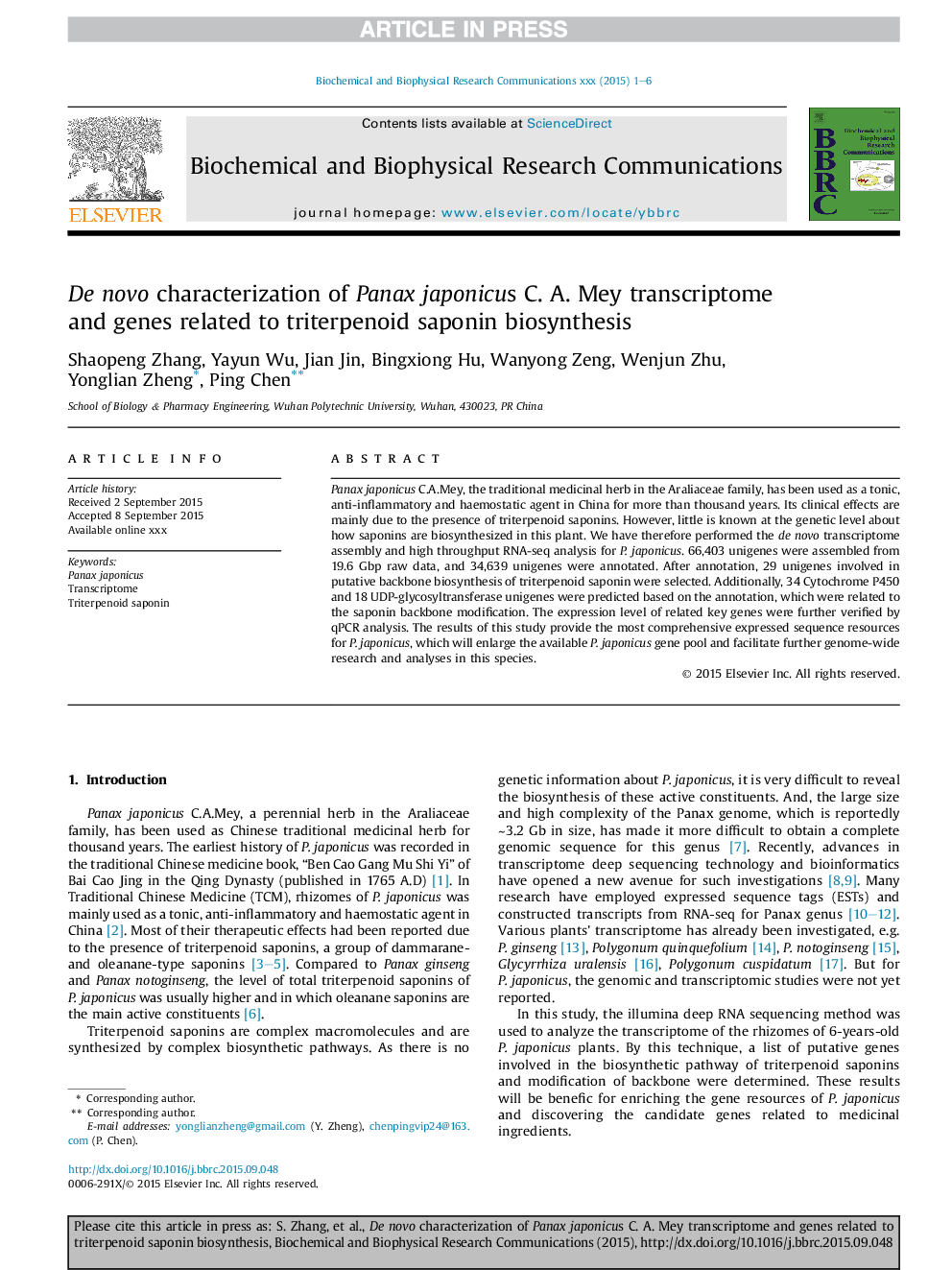| Article ID | Journal | Published Year | Pages | File Type |
|---|---|---|---|---|
| 10750841 | Biochemical and Biophysical Research Communications | 2015 | 6 Pages |
Abstract
Panax japonicus C.A.Mey, the traditional medicinal herb in the Araliaceae family, has been used as a tonic, anti-inflammatory and haemostatic agent in China for more than thousand years. Its clinical effects are mainly due to the presence of triterpenoid saponins. However, little is known at the genetic level about how saponins are biosynthesized in this plant. We have therefore performed the de novo transcriptome assembly and high throughput RNA-seq analysis for P. japonicus. 66,403 unigenes were assembled from 19.6 Gbp raw data, and 34,639 unigenes were annotated. After annotation, 29 unigenes involved in putative backbone biosynthesis of triterpenoid saponin were selected. Additionally, 34 Cytochrome P450 and 18 UDP-glycosyltransferase unigenes were predicted based on the annotation, which were related to the saponin backbone modification. The expression level of related key genes were further verified by qPCR analysis. The results of this study provide the most comprehensive expressed sequence resources for P. japonicus, which will enlarge the available P. japonicus gene pool and facilitate further genome-wide research and analyses in this species.
Related Topics
Life Sciences
Biochemistry, Genetics and Molecular Biology
Biochemistry
Authors
Shaopeng Zhang, Yayun Wu, Jian Jin, Bingxiong Hu, Wanyong Zeng, Wenjun Zhu, Yonglian Zheng, Ping Chen,
